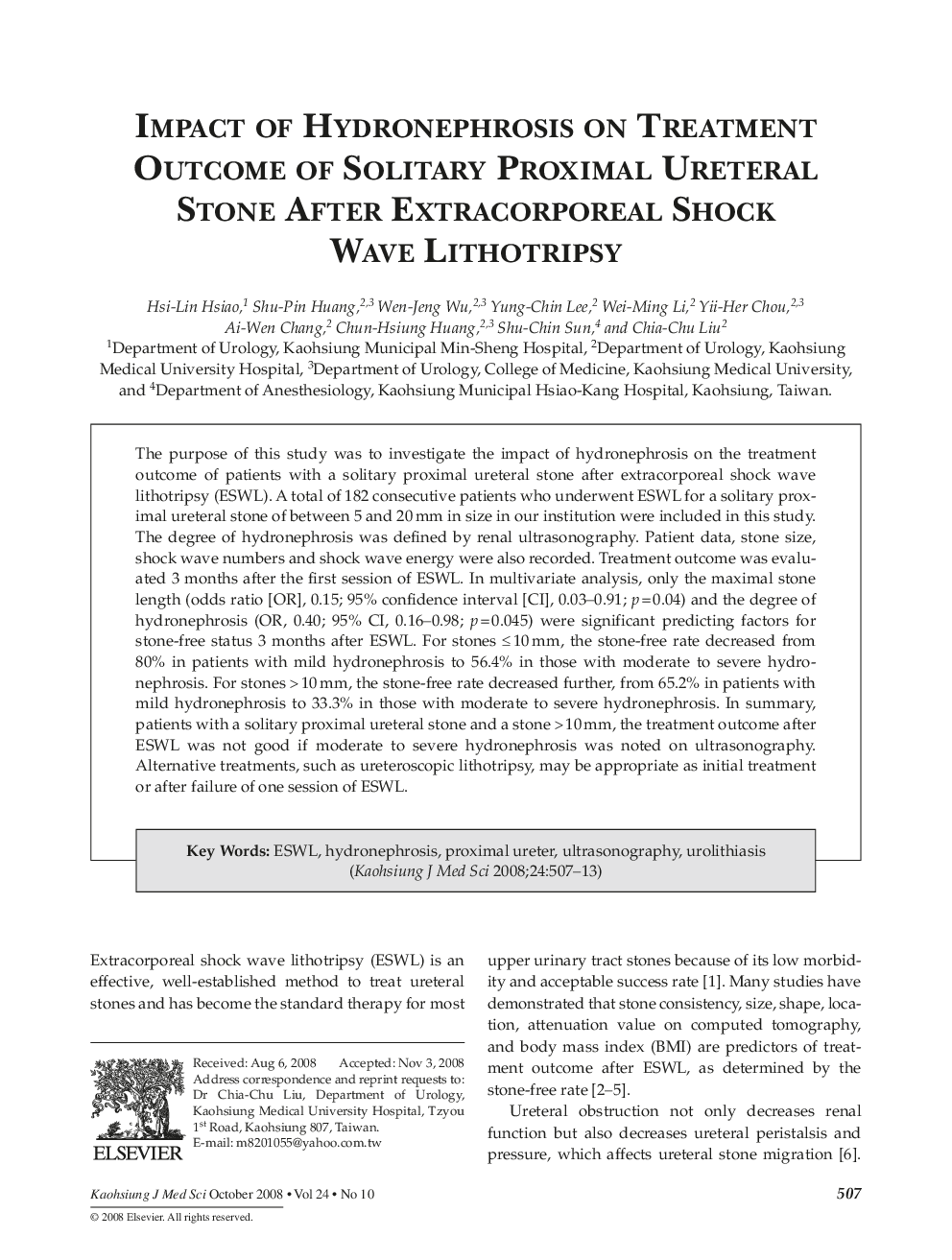| Article ID | Journal | Published Year | Pages | File Type |
|---|---|---|---|---|
| 3486203 | The Kaohsiung Journal of Medical Sciences | 2008 | 7 Pages |
The purpose of this study was to investigate the impact of hydronephrosis on the treatment outcome of patients with a solitary proximal ureteral stone after extracorporeal shock wave lithotripsy (ESWL). A total of 182 consecutive patients who underwent ESWL for a solitary proximal ureteral stone of between 5 and 20 mm in size in our institution were included in this study. The degree of hydronephrosis was defined by renal ultrasonography. Patient data, stone size, shock wave numbers and shock wave energy were also recorded. Treatment outcome was evaluated 3 months after the first session of ESWL. In multivariate analysis, only the maximal stone length (odds ratio [OR], 0.15; 95% confidence interval [CI], 0.03–0.91; p = 0.04) and the degree of hydronephrosis (OR, 0.40; 95% CI, 0.16–0.98; p = 0.045) were significant predicting factors for stone-free status 3 months after ESWL. For stones ≤ 10 mm, the stone-free rate decreased from 80% in patients with mild hydronephrosis to 56.4% in those with moderate to severe hydro-nephrosis. For stones > 10 mm, the stone-free rate decreased further, from 65.2% in patients with mild hydronephrosis to 33.3% in those with moderate to severe hydronephrosis. In summary, patients with a solitary proximal ureteral stone and a stone > 10 mm, the treatment outcome after ESWL was not good if moderate to severe hydronephrosis was noted on ultrasonography. Alternative treatments, such as ureteroscopic lithotripsy, may be appropriate as initial treatment or after failure of one session of ESWL.
